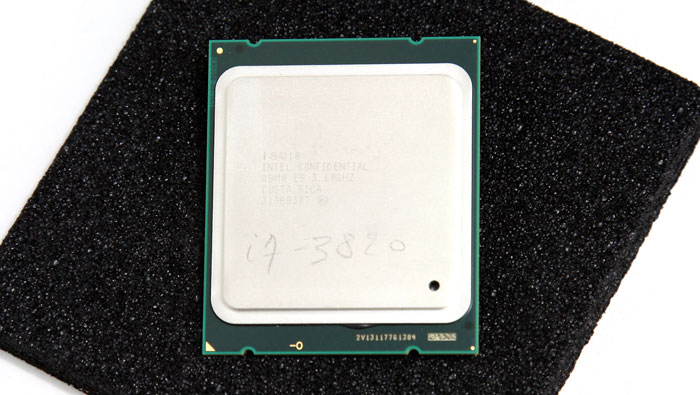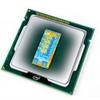Sandy Bridge-E
Sandy Bridge-E
Sandy Bridge-E, it's the all new 'enhanced' slash 'enthusiast' version of what pretty much is the Sandy Bridge (Core i7 2600K) architecture, yet with some new features added and some others stripped away.
Simply put, you take all the good ingredients from Sandy Bridge, preferably add two more cores, a slightly increased L3 cache and add a pinch of quad-channel memory. There is one exception to the rule, one Core i7 Sandy Bridge-E CPU that will remain a quad-core processor, the 3820 as tested today.
There's also something else missing, though we doubt a little that you'd miss it in this enthusiast grade segment. A change in the architecture is that Sandy Bridge-E doesnt have an on-die graphics processor built into the architecture. So if you are dependant on QuickSync as a feature then please stick to a 1st generation Sandy Bridge 2300/2400/2500/2600/2700 series processor.
Now we MUST mention that the Intels Core i7-3820 CPU is based on the Sandy Bridge-E die that packs only 1.27 billion transistors, compared to the 2.27 billion transistors found in Intels six-core parts. Together with the reduction in transistor count, the chip also has a smaller die that measures 294 square millimeters, making it roughly two thirds the size of the Core i7-3960X and i7-3930K (these chips measure 435mm2).
Intel has a lot of flexibility in their hands alright. In this first wave Intel released three Sandy Bridge-E class processors, namely the Core i7-3960X, the Core i7-3930K, and the Core i7-3820. Each will have different clock frequencies and a slightly changed L3 cache.
Again, the Core i7-3820 is a quad core processor, the other two are six-core processors.
Below, an overview of the main specs.
| Processor |
Base Clock |
Max. Turbo Clock |
Cores / Threads |
L1 Cache | L2 Cache | L3 Cache | Memory | Interface | TDP |
|---|---|---|---|---|---|---|---|---|---|
| Core i7-3960X | 3.3 GHz | 3.9 GHz | 6/12 | 64KB x6 | 256KB x6 | 15 MB | Quad-channel DDR3-1600 |
LGA 2011 | 130 W |
| Core i7-3930K | 3.2 GHz | 3.8 GHz | 6/12 | 64KB x6 | 256KB x6 | 12 MB | Quad-channel DDR3-1600 |
LGA 2011 | 130 W |
| Core i7-3820 | 3.6 GHz | 3.8 GHz | 4/8 | 64KB x4 | 256KB x4 | 10 MB | Quad-channel DDR3-1600 |
LGA 2011 | 130 W |
| Core i7-2600K | 3.4 GHz | 3.8 GHz | 4/8 | 64KB x4 | 256KB x4 | 8 MB | Dual-channel DDR3-1333 |
LGA 1155 | 95 W |
What's interesting from a naming point of view is that Intel chooses three different suffixes for the processors, we have an X model, a K model and a 'normal' model. A little confusing, but it does make some sense:
- The X suffix is Intels Extreme Edition processors, this means the top-of-the-line unlocked processors.
- The K suffix denotes a slightly lower end processor yet with its multiplier unlocked.
- And the normal editions are pretty much mainstream without any enthusiast grade overclock options, meaning a locked multiplier.
Cache wise the L1 and L2 caches are 100% similar to Sandy Bridge:
- 32KB data and a 32KB instruction L1 cache per physical core.
- 256KB L2 cache per core.
All three processors will have a 130W TDP including the 3820 with two less cores. We had hoped to see a lower TDP with the original Sandy Bridge processors being so energy efficient.


